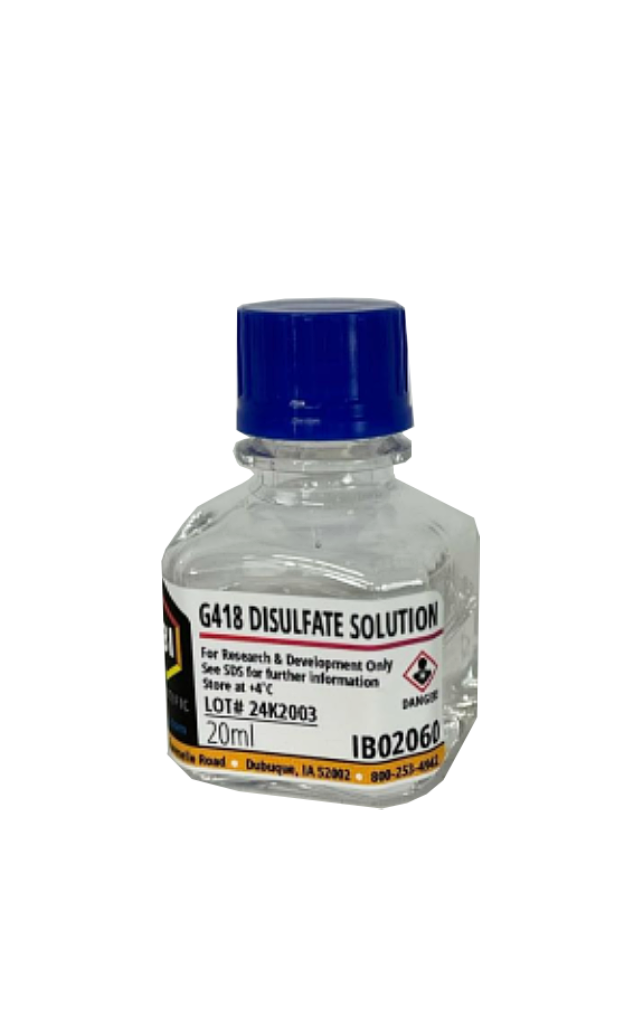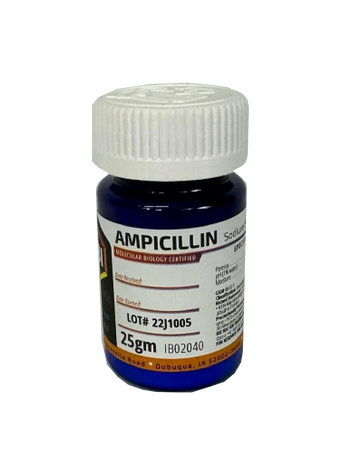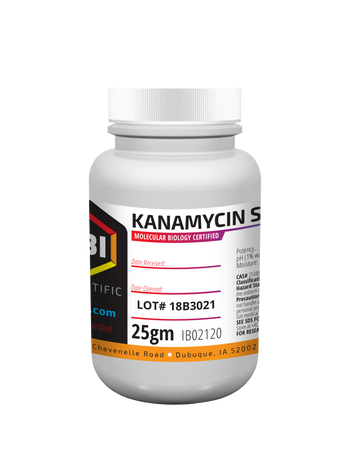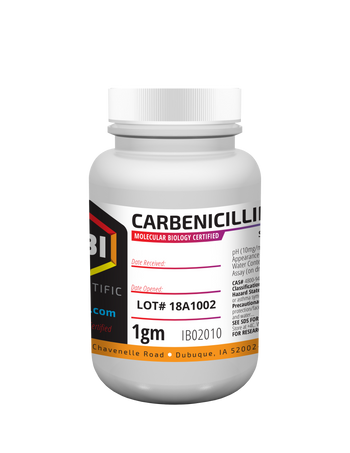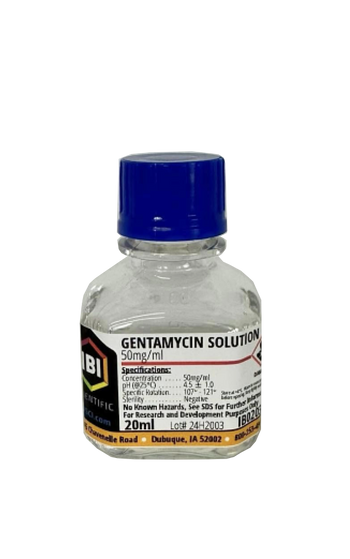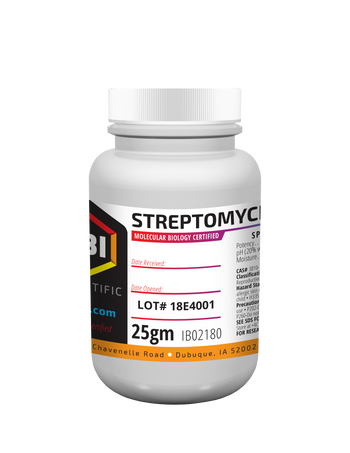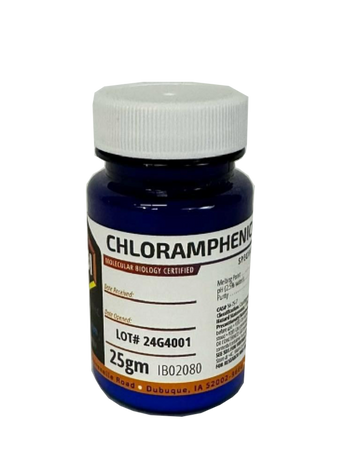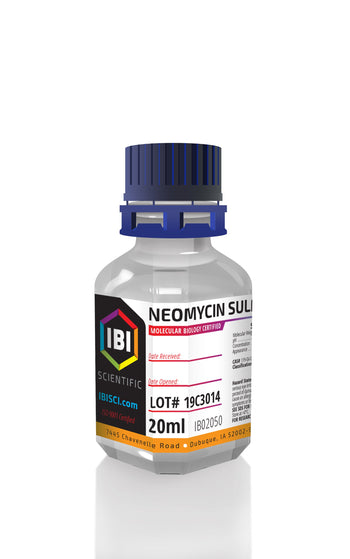
- Item Description
- Physical Specifications
- Certificate of Analysis
- SDS
- Technical Information
CAS#: 108321-42-2
- Used as a selection antibiotic in cell culture gene selection applications
- Prevents protein synthesis by blocking the elongation step in prokaryotic and eukaryotic ribosomes
- Concentration: 50mg/ml
- This product cannot be shipped to a private residence.
G418 DiSulfate Solution is routinely used as a selection antibiotic in cell culture gene selection applications. G418 solution is an aminoglycoside antibiotic isolated fromMicromonospora rhodorangeaand is closely related to the gentamicins; most notably, genatmicin B1. G418 is a generic name of Geneticin®.
Click on Technical Information for Kill Curve protocols and working concentrations for selection of mammalian cells.
CAS#:108321-42-2
Molecular Formula:C20H40N4O10* 2H2SO4
Molecular Weight:692.71 g/mol
Appearance:Clear, colorless solution
Source:Biosynthetic: produced byMicromonospora rhodorangea
pH (@25°C):4.6 - 6.0
Optical Rotation:+104° - +121°
Storage:2-8°C
Concentration:50 mg/ml
Technical Description and Characteristics:
G418 blocks polypeptide synthesis by inhibiting the elongation step in both prokaryotic and eukaryotic cells. G418 is commonly used in laboratory research to select genetically engineered cells, typically using the kanMX selectable marker.
G418 is also used to select successfully transfected mammalian cells that express the neo resistance gene in addition to the gene of interest. The neo gene encodes amino-glycoside 3'-phosphotransferase; an enzyme which confers resistance to G418 disulfate and neomycin.
Kill Curve / G418 Titration Protocol
1) Seed cells of the parental cell line in a 24-well plate at different densities (50,000 - 100,000 and 200,000 cells /ml) and incubate the cells for 24 hours.
2) Remove the medium and then add medium, with varying concentrations of antibiotic, to each well (0, 50, 100, 200, 400, 600, 800, and 1,000 ug/ml) and incubate at 37 deg C.
3) Refresh the selective medium every 3 - 4 days and observe the percentage of surviving cells over time using procedures such as EMA vs Hoechst staining, flow cytometry or MTT assay.
4) Determine the lowest concentration of antibiotic that kills a large majority of the cells within 14 days. This concentration should be used for selection of a stable transfected cell line.
5) If necessary, repeat the experiment to narrow the antibiotic concentration range.
Method: Determine Optimum Working Concentration for Selection of Mammalian Cells
1) Plate cells in 0.5ml complete growth medium (ex: DMEM + 10% FBS) per/well in a 24-well tissue culture plate one day prior to introducing antibiotic selection. Cells should be 60-80% confluent prior to adding G418 disulfate. Typical cell density for adherent cells is 0.8 - 3.0 x 105 cells per/ml, and for suspension cells 2.5 - 5.0 x 105 cells/ml.
2) Add increasing amounts of G418 disulfate to duplicate wells of cells plated in complete media. Make certain to include a duplicate control well with no G418 disulfate. General working concentration for G418 is 0.2mg/ml - 1.0 mg/ml.
3) Replace media containing G418 every 2 - 3 days for 7 - 14 days. Examine the culture every day for viability of the cells.
4) Use the lowest concentration that gives 100% cell death after 7 days under G418 disulfate selective pressure.
Stock Solution:
G418 disulfate is prepared as a solution at a concentration of 50mg/ml in water for quick and easy dilution factor calculations. Sterile filtration through a 0.22 micron filter is standard procedure.

